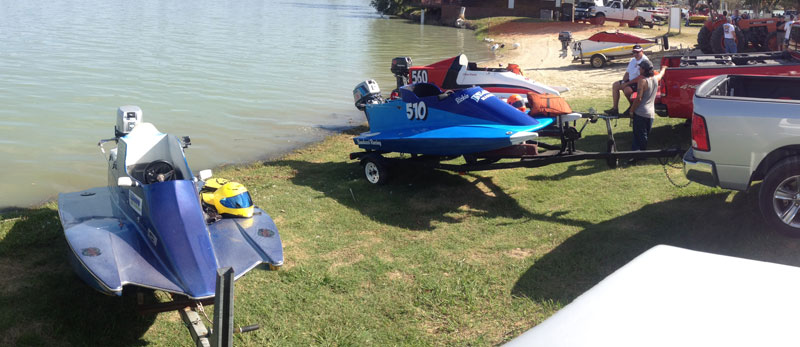Sport C Racing

Here is a simplified pdf guide to the Sport C boat rules. This is not an official document, and has been paraphrased and clipped, but has most of the rules compacted into a Sport C specific document. Simplified Sport C guide Always refer to the official www.APBA.org documents for safety and racing rules.
We have started restoring and racing Sport C class racing tunnel hulls. Most are raced at APBA sanctioned events, though are also "street legal" when properly registered and equipped (horn, fire extinguisher, uscg approved life jacket, etc to meet State and Coast Guard rules). Power is typically a 40hp outboard and speeds reach 60 MPH.
The boats include a seat, foot throttle, power trim, and kevlar reinforced cockpit sides. Drivers are not restrained (no seat belt) so capsule training is not needed (but is required on all faster OPC classes which also utilize a full restraint harness and closed cover/windshield). Drivers wear Snell approved motorcycle helmets of orange or yellow color, and a racing approved life jacket, typically built by LifeLine or SRP. Street (non-racing) operation of the boats do not legally require a helmet and impact rated life jacket, but it is highly recommended for personal safety. Driving these boats outside of races also requires care to ensure water conditions, other boating traffic, and general conditions allow safe high speed driving.
Many boats were built during the "mini boat craze" of the late 80's. There are assorted redesigned and continually developed boats built since then. Most are hulls are composite/fiberglass, though there are certainly also wood boats also. Some boat and hardware plans are available online, including from Dillion Racing

Though the APBA rules allow a handful of engines, the competitive boats are powered with Nissan/Tohatsu 40hp 2 cylinder 2 stroke outboards sold in the US from the 80's through 2002. They are marketed as models NS40C (Nissan decals) and M40C (Tohatsu decals). Most are aquired second hand through craigslist, ebay, and the like. There are very few adjustments or tuning that is allowed under the racing rules. The rules require that motors meet all OEM specs for cylinder bore (max of 0.020 over bore to repair cylinders), repair parts meet original specs, carb silencer remain intact, and outboards must have unmodified OEM gearcases that retain F-N-R shifting ability (also part of what makes these boats street legal). Custom racing props are a must, and several performance shops across the country build and tune them.

